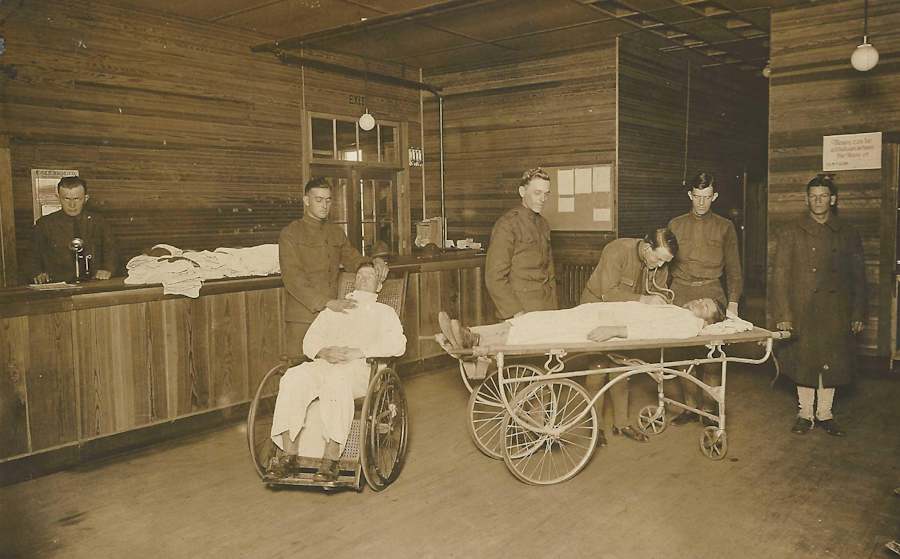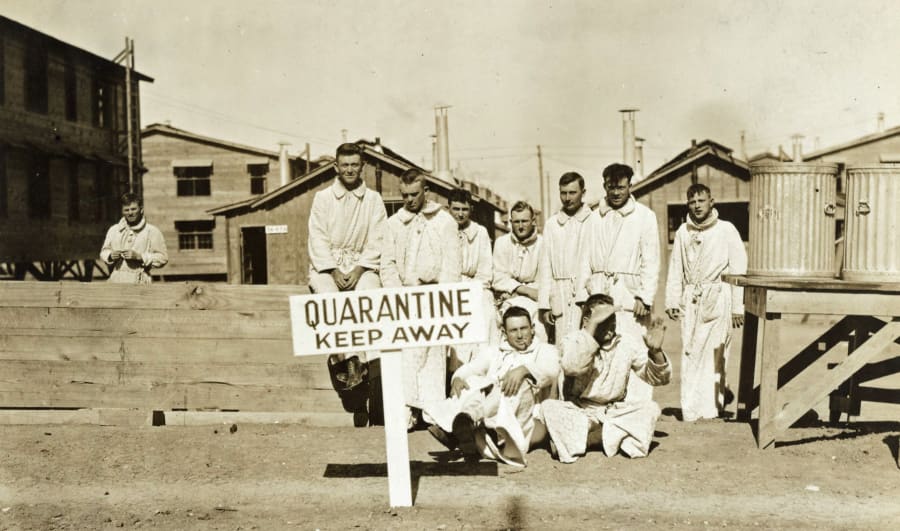SAN ANTONIO – While the new coronavirus is unlike any humans have ever seen before, an international pandemic is not. In 1918, the so-called Spanish Flu spread quickly around the world and eventually made its way to San Antonio.
How did it begin?
In San Antonio, it was a hot, dusty, September day when city and military leaders began to take note. The first sign of problems came from Camp Travis, which is now part of Joint Base San Antonio Fort Sam Houston.
“The doctor of the camp came to Brigadier General [George H.] Estes, who was in charge. This was actually Camp Travis now, and he’s diagnosed 51 cases of the Spanish Flu," said George Wunderlich, Director of the United States Army Medical Department Museum at Fort Sam Houston in an interview with KSAT. “Immediately, Brigadier General Estes began to put some measures into place. The first thing he did is quarantine Camp Travis. He would then also quarantine Fort Sam. You’ve got to remember, at that time, Brooke, was an army air station as well. So, all of the camps here in San Antonio, including Bullis, up north, are going to go on lockdown.”
The Army had become familiar with “Spanish Flu” thanks to World War I, which was winding down in the fall of 1918. Many of the Allied countries were seeing a spread through their military personnel. However, the virus had been overshadowed in the press, by and large, by the war.
“The only people in Europe who were publishing about the flu, which had hit their population, was Spain because they were neutral (in the war),” said Wunderlich.
As a result of the country’s focus on the illness — as opposed to being the site of the origination of the virus — the strain of influenza was inaccurately dubbed the “Spanish Flu”. It began to spread worldwide as service members returned to their home countries.

“When those men started to come back home, we see it spreading and eventually it goes all over the world," said Wunderlich.
How quickly did it spread in San Antonio?
At the end of September 1918, at Camp Travis, there were 51 known cases, according to the Fort Sam Houston Museum. Just two days later, an additional 240 cases were reported. On October 9, the number of infected was around 1,000. By the end of November, nearly 11,000 military personnel had been treated for influenza at Camp Travis alone. The exponential growth is similar to that of COVID-19.

It would also spread to the civilian population of San Antonio, too. Brigadier General George H. Estes had contacted the city back in September when he quarantined the Army installations.
“He called a gentleman by the name of [Dr. William Anthony] King, who was the city of San Antonio Health Services Director, and informed him of what he had done," said Wunderlich.
According to the Influenza Encyclopedia, a project by the University of Michigan Center for the History of Medicine and Michigan Publishing, which cites the San Antonio Express-News at the time, “rather than take chances, King asked owners and managers of public entertainment venues to keep their ventilation systems running and to bar entry of anyone exhibiting symptoms of illness. He would also appoint deputies to enforce these measures if necessary.”
While the disease was spreading quickly through Fort Sam Houston and Fort Travis, the number of cases in San Antonio civilian population stayed relatively low. As a result, according to the Influenza Encyclopedia, “King declined to impose bans on public gatherings, recommending instead that people avoid crowds and that schools send sick children home.”
This would not last. Just days later, on October 16, the San Antonio Board of Health would vote to close all schools, churches, lodges and theaters. They would also ban all public gatherings. The closures may have come too late, because at this point, San Antonio was reaching their peak, according to Public Health Reports. On October 19, physicians reported 700 influenza cases in the city (a similar number of COVID-19 cases confirmed in Bexar County as of this publishing.)
A second peak
According to the Influenza Encyclopedia, on November 11, the city opted to open back up, after cases of influenza had sharply declined. Most of November passed with no issue, but by early December, the virus had returned with vigor. The city put in orders to shut down certain businesses, with a full shut-down coming on December 9, 1918. By the end of December, the city opened up, once again.
Death totals
The military was hit hard by the pandemic, with fairly high numbers in San Antonio. According to the Fort Sam Houston Museum, in 1919, a nurse assigned to Camp Travis would report 575 deaths from the pandemic. The small mortuary at Camp Travis had to be altered to handle the sheer number of victims.

The civilian population of San Antonio saw staggering numbers, too.
“The number of people who contracted it, was about five hundred and thirty-five per 1,000,” said Wunderlich. “Almost half of the population.” Of those who contracted it, death would usually result from pneumonia. In San Antonio, a town of around 150,000 at the time, 881 people would lose their life.
How did the 1918 pandemic compare to COVID-19?
While the exponential rise in cases was similar to COVID-19, the 1918 pandemic was a different virus.
“It tended to affect the young more quickly and, in many cases worse than the old, which we see in the current (virus), is not so much the case,” said Wunderlich. “The other (difference) that really got very scary is you would actually see people who would bleed from the nose, from the mouth, from their eyes and even their ears in the later stages."
Meantime, treatment in 1918, for those in the military, called for hospital beds to be moved outside.
“Interestingly enough, back then, they felt that the best place to keep these men, if the weather was good, was outdoors,” said Wunderlich.
Just like today, nurses and doctors played a heroic role in getting the country through the pandemic. Nurses came from across the country to help at military installations, like Camp Travis.

The “Spanish Flu” would return several more times throughout the world through 1920. Cases were even reported decades later.
“Now, what’s interesting is some people say, well, we beat the Spanish flu. We didn’t. The fact is there were still reported cases as late as 1957,” said Wunderlich.
COVID-19, the respiratory disease caused by the new virus, stands for coronavirus disease 2019. The disease first appeared in late 2019 in Wuhan, China, but spread around the world in early 2020, causing the World Health Organization to declare a pandemic in March.
MORE CORONAVIRUS COVERAGE FROM KSAT:



